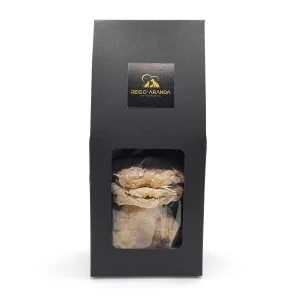The Tornjak originated from genetically homogeneous, almost extinct, indigenous shepherd dogs. These dogs have...
THE SHEPHERD OF PICARDY
INTRODUCTION
The Berger Picard or Picardy Shepherd is a breed of shepherd dog of French origin.
This breed was nearly extinct after the world wars and is still a rare breed today. It is a human-oriented dog, loyal and suitable as a pet if socialised from birth.
THE ORIGIN OF THE PICARDY SHEPHERD DOG
The Picardy Shepherd has very ancient origins. It cannot be asserted that the Picardy Shepherd Dog is strictly native to the Picardy region, it is possible even probable that it has been spread throughout north-eastern Europe, the shepherd and herding dogs being typical of this region.
In 1863 the first Picardy Shepherds were judged at a show in the same category as Beaucerons and Briards.
In 1898 it became clear that the Picardy was a breed. Paul Megnin outlined the first standard in 1922. The breed got its definitive recognition in 1925.
The breed stagnated somewhat before the Second World War and after the Second World War, a group of followers interested in reviving the breed began to look to Picardy for the origin of the most typical breeding stock.
After many years during which the Breed Club had difficulties in obtaining official recognition, Mr. Robert Montenot, an eminent canine specialist, founded the Club ‘The Friends of the Picardy Shepherd’ in 1955.
The club obtained final recognition in 1959 and a new breed standard was approved by the S.C.C. in 1964. The present standard was written by Mr. J.C. Larive, president of the club and its chairman. Larive, president of the club and its committee in collaboration with Mr. R. Triquet.
THE STANDARD OF THE PICARDY SHEPHERD
GENERAL APPEARANCE: The Picardy Shepherd is a medium sized dog. He is solid, strong, well muscled and well built without being heavy. He is an elegant dog both standing and on the move.
His affectionate and alert expression is characterised by his rustic appearance.
IMPORTANT PROPORTIONS: The Picardy Shepherd Dog is a medium lined dog (of medium proportions). The length of the body from the point of the shoulders to the point of the ischium should be slightly longer than the height at the withers (5 - 8 %). Females are generally slightly longer than males.
Skull and muzzle are of equal length.
The distance from the elbow to the ground is equal to half the height at the withers.
HEAD: Without being heavy, should be in proportion to the body. Delicately chiselled, it must not give the impression of being pointed. Seen in profile, the lines of the skull and muzzle are parallel. Typicality is marked by its rustic appearance, well marked eyebrows (hair approximately 4 cm long which should not cover the eye) together with beard and moustache.
CRANIAL REGION:
SKULL: Seen from the front, the foreface should not be flat but slightly convex with a slight depression in the centre.
STOP: Only slightly defined, set at equal distance from occiput and nose.
FACIAL REGION:
NECK: Well developed. Always black in colour. Nose well opened.
NECK: Strong and not too long. Must not end in a point. Bridge of nose straight. Presence of fine beard and whiskers.
CHEEKS: Should be moderately rounded.
LIPS: Thin and tight fitting.
TEETH: Jaws strong. Scissor bite. Teething should be complete.
EYES: Horizontal, medium size, oval, not prominent, dark in colour (the colour may be more or less dark depending on coat colour but never lighter than hazel).
EARS: Moderate size, broad at set-on, set on high, always carried naturally erect with slightly rounded tips. Divergent carriage tolerated but not desired.
NECK: Strong and muscular, of moderate length emerging clearly from the shoulders to allow a lofty carriage.
BODY: The bone structure is sound, without exaggeration and the muscles are lean.
BACK: Straight
LOIN: Strong
Croup: Slightly sloping and progressively towards the thigh.
CHEST: Reaching to elbow level but not below. The measurement of the correct circumference of the chest taken immediately behind the elbows is more than 1/5 of the height at the withers. Ribs well sprung at the top, gradually flattening towards the sternum.
BOTTOM LINE AND BELLY: Slightly sloping.
TAIL: Natural length. In repose it should reach the level of the hock joint and be slightly curved towards the end. During movement it may be carried higher but never over the back. The hair on the tail is of the same length as on the body.
LIMBS
FOREQUARTERS: Well laid back, seen from the front or in profile.
Shoulders: Long and sloping.
ELBOWS: Close to the body.
ARM: Straight and well muscled.
Pastern: Leaning slightly forward.
HANDS: Rounded, short and compact.
HINDQUARTERS: Well parallel when viewed from behind and well muscled when viewed from the side.
Upper thigh: Long and well muscled.
KNEE: Strongly jointed.
HIP: Moderately sloping, neither too open nor too closed.
METATARSE: Flat.
FEET: Rounded, short and compact. Without dewclaws or supernumerary digits. Firm pads. Nails dark in colour.
GAIT / MOVEMENT: Agile and free. Giving the impression of both elegance and fluidity. Moderate reach of forelegs, limbs remaining parallel.
COAT
HAIR: Rough, semi-long. Should be crisp to the touch. Should measure 5 - 6 cm over the whole body including the tail. Undercoat fine and dense.
COLOUR: Fawn, fawn with dark outer coat, fawn brindle and grey which generally remains dark. Without large white markings (a small white marking on the forechest and on the edge of the feet is tolerated).
HEIGHT:
- Males: 60 - 65 cm.
- Females: 55 - 60 cm.
Tolerance: + / - 1 cm.
FAULTS: Any departure from the foregoing points should be considered a fault and the seriousness with which the fault should be regarded should be in exact proportion to its degree and its effect upon the health and welfare of the dog.
SERIOUS FAULTS:
- Absence of 2 teeth except PM4 in the lower jaw (PM 1 are not taken into consideration).
- Inverted bite without loss of contact.
- Very light coloured eyes.
- Tail curved over the back or excessively short.
- Coat tending to curl. Hair too flat, less than 4 cm or more than 7 cm. Straight or woolly coat.
- Very uneven structure of the limbs, especially incorrect hindquarters, excessive outward lean of the feet, cow-hocked.
DISQUALIFYING FAULTS:
- Aggressiveness or extreme shyness.
- Any dog showing clear signs of physical or behavioural abnormalities.
- Lack of typicality.
- Overshot or undershot with loss of incisor contact.
- Absence of 2 PM4 or more than 2 teeth other than PM4 (PM1 is not taken into consideration).
- Eyes of different colour or light eyes tending to yellow.
- Ears not naturally erect.
- Tail: absent or rudimentary.
- Colour: black, white, harlequin or light. Too much white on forechest, completely white feet, white elsewhere than stated.
- Height not corresponding to the limits of the standard (including tolerance). Height of 67 cm for the male and 62 cm for the bitch can only be tolerated in specimens of exceptional quality.
N.B.:
- Males should have two apparently normal testicles fully descended into the scrotum.
- Only functionally and clinically healthy dogs with breed-typical conformation should be used for breeding.
THE HEALTH OF THE PICARDY SHEPHERD
The breed is generally healthy, although as with all breeds, it is likely to be predisposed to some disorders or diseases, such as elbow and hip dysplasia.
THE TEMPERAMENT OF THE PICARDY SHEPHERD
Due to its sheepdog origins, the Berger is both stubborn and very independent. His loyalty to his owner is also characterised by his distrust of strangers. This breed is often somewhat difficult to train, which is due to its character. However, with patience, perseverance and a lot of empathy, it is definitely possible.
His positive and lively character makes the Berger a real sportsman. He needs a lot of regular exercise. Not only his physical condition, but also his intelligence must be challenged and stimulated by agility games. This is the only way to keep him balanced, which makes training much easier.
CONCLUSION
Nowadays, the Berger is no longer used so much for herding livestock, but rather as a family dog. Here, his stubbornness can be an obstacle and make training difficult. The owner must have a lot of patience and dedication. The Berger is very intelligent and capable of learning. However, he can sometimes question the meaning of an exercise or a command.
Leave a comment
Log in to post comments
















